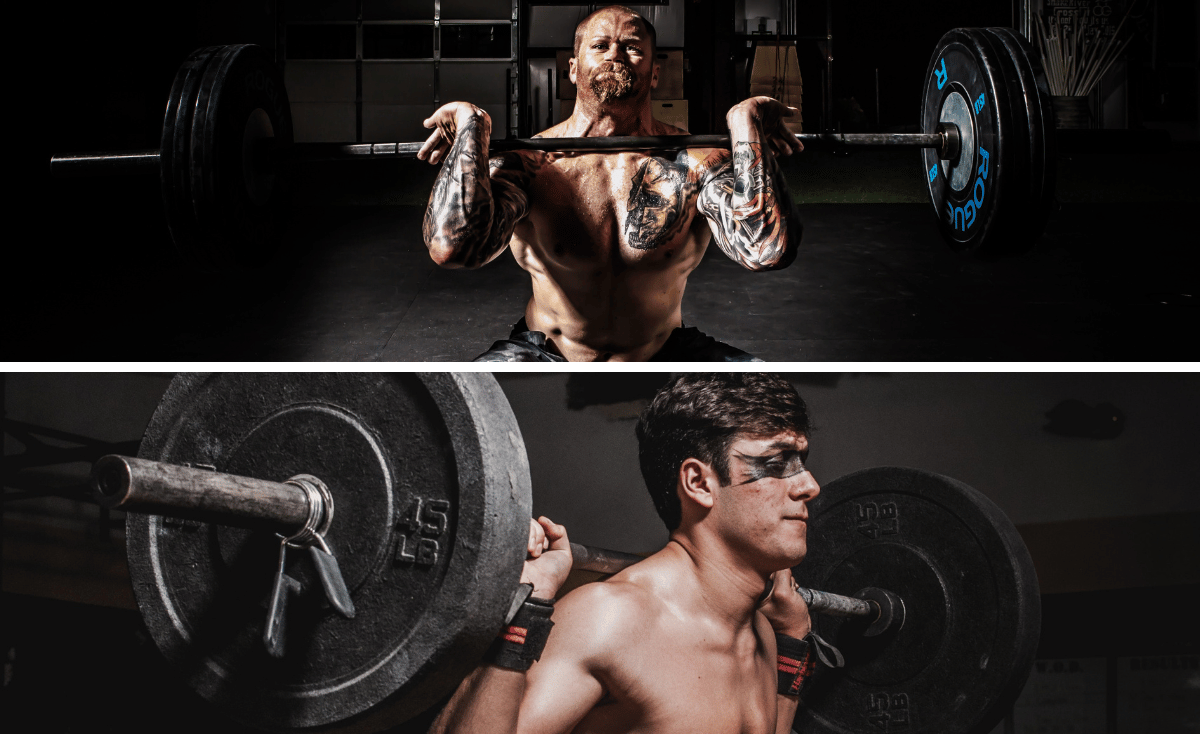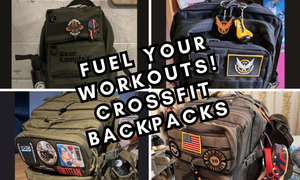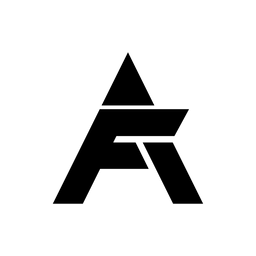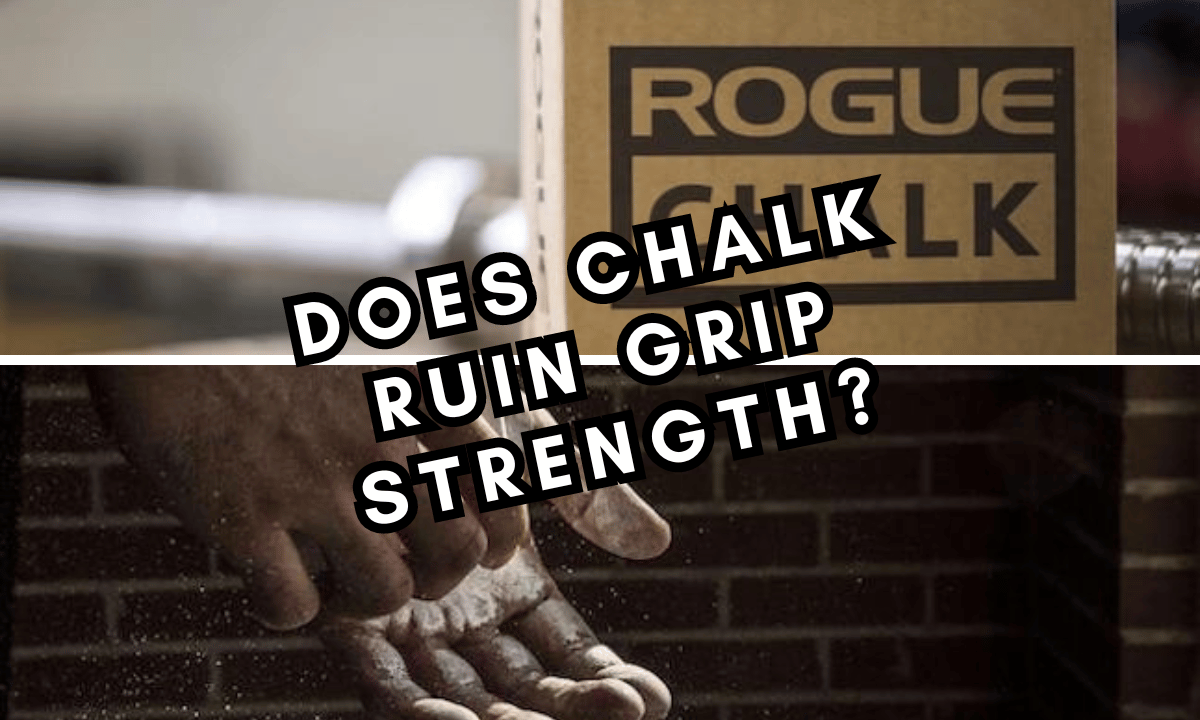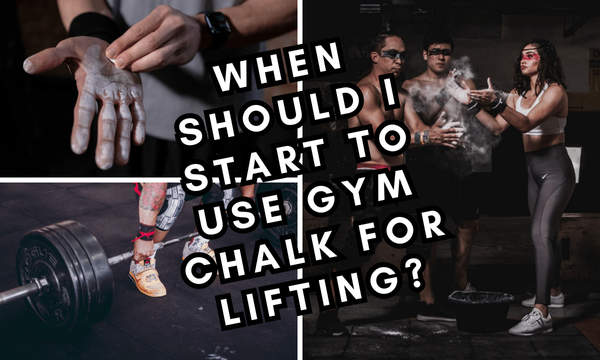Are you looking for a way to take your workouts to the next level? Barbell training is one of the most efficient and effective ways to build muscle, burn fat, and gain strength.
By focusing on specific exercises that target major muscle groups, you can challenge yourself and boost your performance. In this blog post, we'll be exploring the importance of strength training, its many benefits, and how to incorporate it into your existing fitness routine.
So whether you're just starting out on your fitness journey or are an experienced lifter, read on to learn more about what strength training has to offer! Grab a barbell and some weight plates and get started!
How barbell exercises can help you get stronger!
Barbell exercises are an incredibly effective tool for getting stronger, as they engage multiple muscle groups at once. Not only do barbell exercises help to build strength but they also create stability and balance in the body, improve posture and mobility, and contribute to overall health and well-being.
With the correct form, lifting a barbell allows you to move through a full range of motion while putting heavier load on your muscles than any other type of exercise. This makes barbell exercises ideal for building strength and developing the muscles, both large and small.
Overview of the 7 essential barbell exercises.
These 7 exercises form the foundation of any serious strength training routine. Squats target the quadriceps, glutes, hamstrings, and core. Deadlifts strengthen the back and posterior chain muscles such as the glutes, hamstrings, and lats.
The bench press focuses on your chest, shoulders, and triceps. Overhead press builds strength in the shoulders and triceps while rows help to strengthen your back muscles. Rows are essential component of back and core muscle strength. Pull-ups are a staple exercise for building upper body strength.
And finally, Romanian deadlifts target the hamstrings and glutes for improved flexibility and strength. Combined, these 7 exercises provide a comprehensive full-body workout that can help you to build muscle, burn fat, and increase overall strength.
Squats
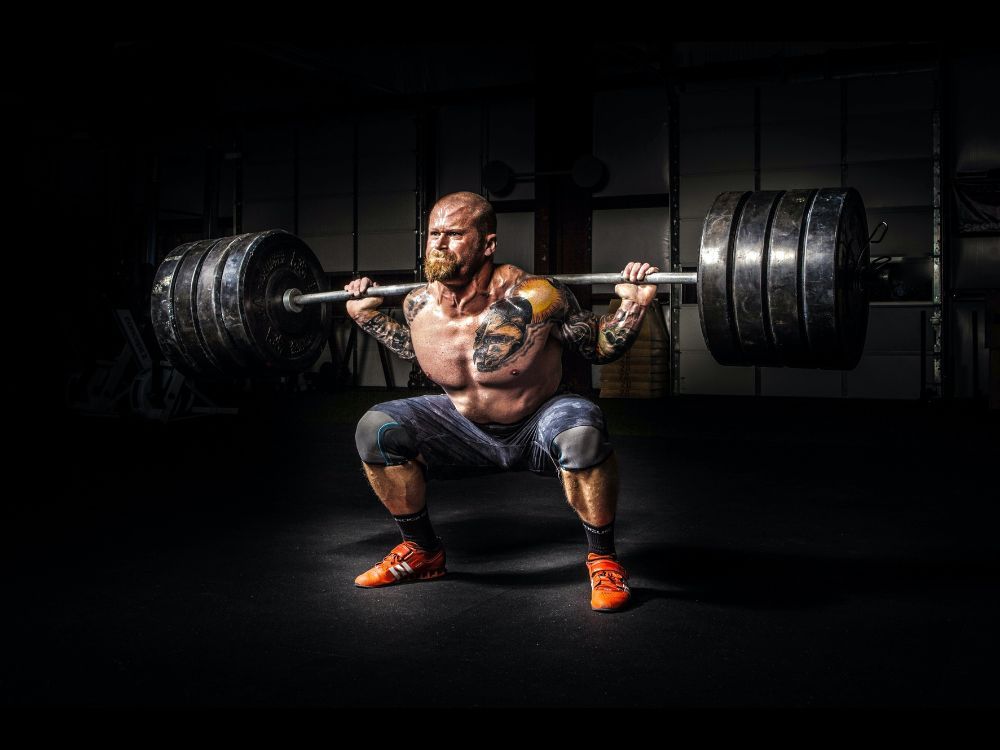
Why squats are important for building strength!
Squats are one of the most important exercises for building strength, as they engage multiple muscle groups at once. Squats work not just your quadriceps, glutes and hamstrings but also work your core muscles, providing stability and helping to improve posture. With squats you can build a strong foundation of functional strength that will benefit you in everyday life.
Squats can also help to improve tendon and ligament health, which helps to reduce the risk of injury when lifting heavier weights. Finally, squatting allows you to lift heavier loads than many other types of exercise, thus making them an essential tool for anyone serious about building strength and muscle mass. Learning the barbell front squat is something to put on your to learn list.
Proper squat form.
To perform a proper barbell back squat, start with your feet shoulder-width apart and toes pointed slightly outward. Bend at the hips and knees simultaneously until your thighs are parallel to the ground. Keep your back straight and core engaged throughout the movement. Push through your heels as you rise up and squeeze your glutes at the top of the movement.
Make sure to keep your shoulders back and chest out while performing the squat to ensure correct form. Finally, make sure to not go beyond a 90-degree knee bend angle as this can cause strain on the lower body joints.
Variations of squats (front squat, back squat, overhead squat)
The squat is an incredibly versatile exercise that can be modified with a variety of different variations to target different muscle groups and develop strength in specific areas. The front squat places the weight directly in front of the lifter, engaging their core muscles and leg drive throughout the movement.
The back squat is similar to the traditional form, but with the added benefit of increased lower back involvement due to the barbell being placed on your shoulders. Finally, the overhead squat involves holding a barbell over your head as you perform the squat, targeting your shoulder muscles and requiring greater balance and coordination. Each variation offers unique benefits and should be incorporated into any strength training program for maximum results.
Deadlifts
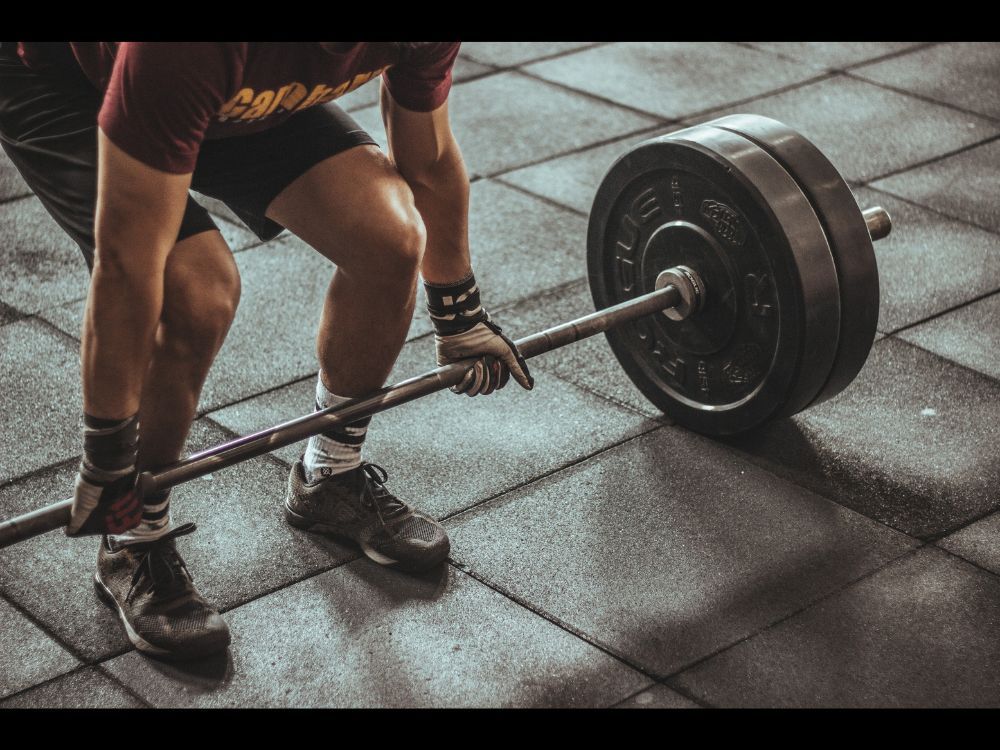
Why deadlifts are essential for building strength
Deadlifts are one of the most effective exercises that you can incorporate into your strength training program. Not only do they strengthen the legs, hips, and core muscles, but they also engage your entire posterior chain. Deadlifts help to drastically improve your functional movement patterns as well as overall coordination and balance.
They can also be used to build mass in smaller muscle groups such as the glutes and hamstrings that often go neglected by other exercises. Additionally, deadlift form helps to prevent back injuries by improving posture and teaching proper spinal alignment during lifting. By integrating deadlifts into your routine, you can increase strength and stability for a variety of movements and ultimately improve your performance on multiple levels.
Proper deadlift form
Proper deadlift form is essential to ensure the safety and effectiveness of your lift. Begin by placing your feet shoulder width apart with your toes slightly pointed outwards. Keeping a neutral spine, hinge at the hips to grab the barbell with an overhand grip. Lift your chest up and drive through your heels, contracting your core and glutes as you stand up straight.
Keep the bar close to your body as you move upward until you are standing tall. Finally, slowly lower the weight back down in a controlled manner and reset for another rep. Maintaining correct form throughout each repetition is key for maximizing results and minimizing risk of injury.
Variations of deadlifts (sumo deadlift, conventional deadlift, Romanian deadlift)
Deadlifts come in many variations that can be beneficial to your workout routine. The Sumo deadlift is a variation where the feet are placed wider than shoulder-width apart and the hands extend beyond the knees with an overhand grip. This works mainly the quads, glutes, and back muscles while also engaging the core.
The Conventional Deadlift resembles a traditional barbell squat where the feet are placed hip-width apart and the hands are placed slightly closer together than shoulder-width apart. With this variation, you engage your entire posterior chain as well as your core muscles for maximal gains.
Lastly, the barbell Romanian Deadlift works primarily on hip hinging movements and posterior chain activation. Start by standing upright with a slight bend in your knees as you hold the weight with both hands extending down towards your toes. Drive through your heels to move upward until you are nearly standing straight before slowly returning to starting position in a controlled manner. All of these variations can help to increase strength, stability, and overall performance when done correctly.
Bench Press
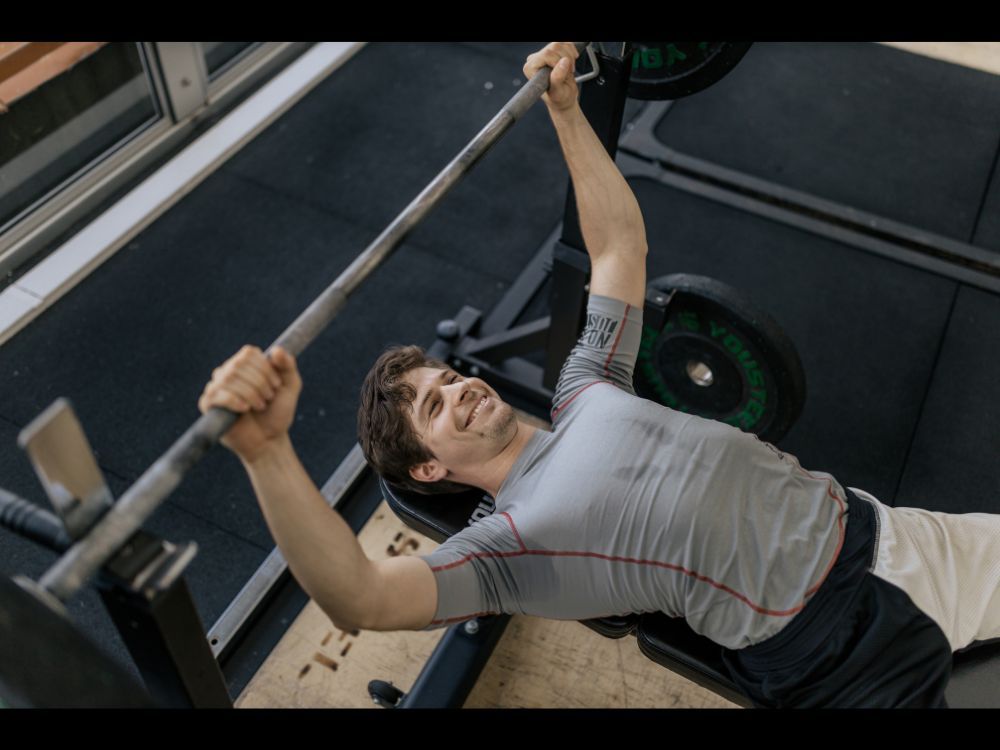
How bench press can help build upper body strength
The bench press is an excellent exercise for building upper body strength. It targets the chest, shoulders, triceps, and core in one move. To perform the flat barbell bench press correctly, start by lying flat on a weightlifting bench with your feet planted firmly on the ground. Then unrack the barbell from above your chest and lower it until it touches your sternum.
From here drive up through your heels and squeeze your shoulder blades together as you press up fully extending your arms at the top of the movement. You can also use dumbbells to increase muscle activation and isolation or decrease range of motion to better target weaker areas within certain muscles. As you continue to practice good form during reps, you will see increased gains in overall upper body strength in no time.
Proper bench press form
The bench press is a great exercise to build upper body strength and should be performed with proper form. To begin, start by lying flat on the weight lifting bench with your feet firmly planted on the ground. Unrack the barbell from above your chest and lower it until it touches your sternum.
From this starting position, drive up through your heels and squeeze your shoulder blades together as you press up to full extension of the arms at the top of the movement. Make sure to keep your shoulders pressed down into the bench with each rep, maintain tightness in the core, and avoid arching or rounding your back throughout all reps of this exercise. With correct form and regular practice you will see increased gains in no time.
Variations of bench press (close grip bench press, incline bench press, dumbbell bench press)
The bench press is one of the most effective exercises for building upper body strength, and there are various variations you can use to vary your workouts. One variation is the close grip press, which involves a narrower grip on the barbell than a traditional bench press. This works more of your triceps and increases muscle activation in those areas.
An incline bench press works the upper part of your chest more intensely than the flat bench press, while decreasing emphasis on core stability. Finally, dumbbells are great for increasing muscle activation with isolation movements and allow for a greater range of motion—this variation is great for targeting weak areas within certain muscles. Incorporating these variations into your regular routines will help you build overall upper body strength quickly and efficiently.
Overhead Press
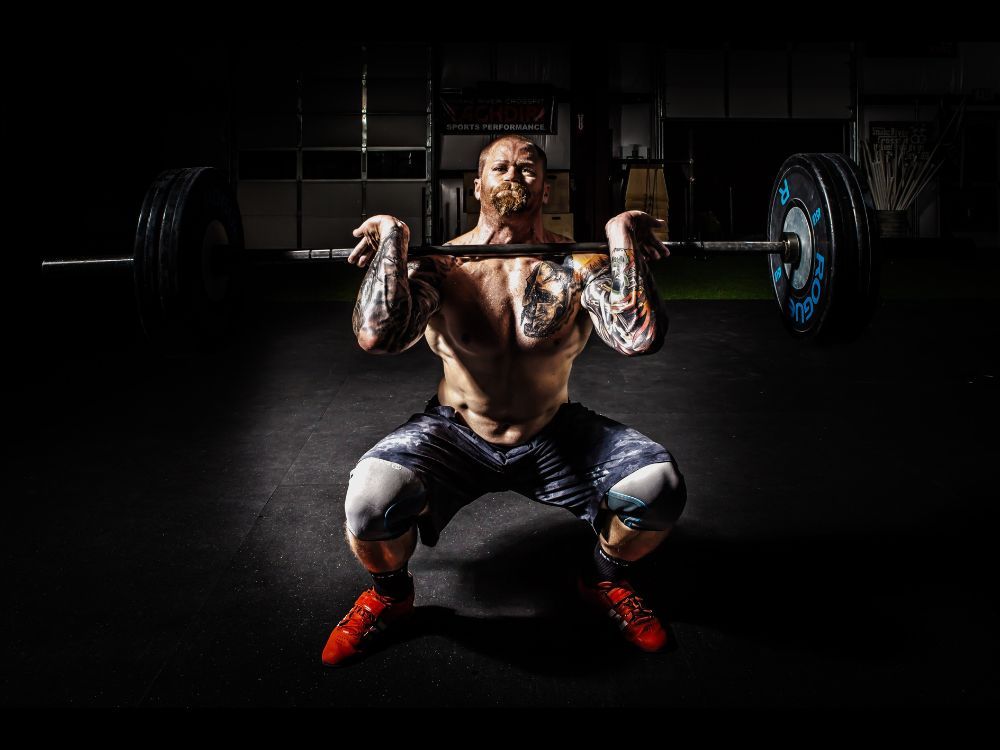
How overhead press can help build shoulder strength
The standing barbell overhead press is one of the most effective upper body barbell exercises for building shoulder strength and overall upper body development. It involves lifting a weighted barbell straight above your head while maintaining control throughout the entire range of motion. This exercise requires great core stability and balance as well as shoulder strength and stability, making it an ideal compound movement for targeting many muscles at once.
Working all of these areas together helps build stronger shoulders and increases muscle definition in the chest, back, arms, and shoulders. By varying the weight you use during this exercise and doing different angles with your hands on the barbell, you can quickly start to see increased gains in strength and definition.
Proper overhead press form
Proper form for the overhead press is essential for maximizing its effectiveness and keeping your body safe from injury. When performing the overhead press, start with your feet shoulder-width apart and keep your core tight throughout the entire motion. Grasp the barbell or dumbbells firmly with both hands, generally slightly wider than shoulder width apart. Lift the weights up until they are above your head, keeping them close to your body and locked in a straight line.
Make sure not to arch your back during this movement, as it can lead to potential injury. Finally, pause at the top of the movement and slowly lower down to your starting position. Being mindful of proper form while completing an overhead press will help you maximize gains in strength and avoid any unnecessary injuries.
Variations of overhead press (push press, strict press, dumbbell overhead press)
There are many variations to the standard overhead press, each providing its own benefits. The push press is a great way to increase power and explosiveness in your press as you use momentum from a dip of your hips and knees to drive the weight up. The strict press offers control and isolation of the muscles used in the exercise, allowing for increased muscular development while also helping to build a strong foundation.
Finally, there is the dumbbell overhead press which can be completed with one or two dumbbells at once, offering an additional challenge when compared to barbell presses. All three variations will help build strength in your shoulders and upper body, but taking advantage of all three can provide even more significant results.
Rows
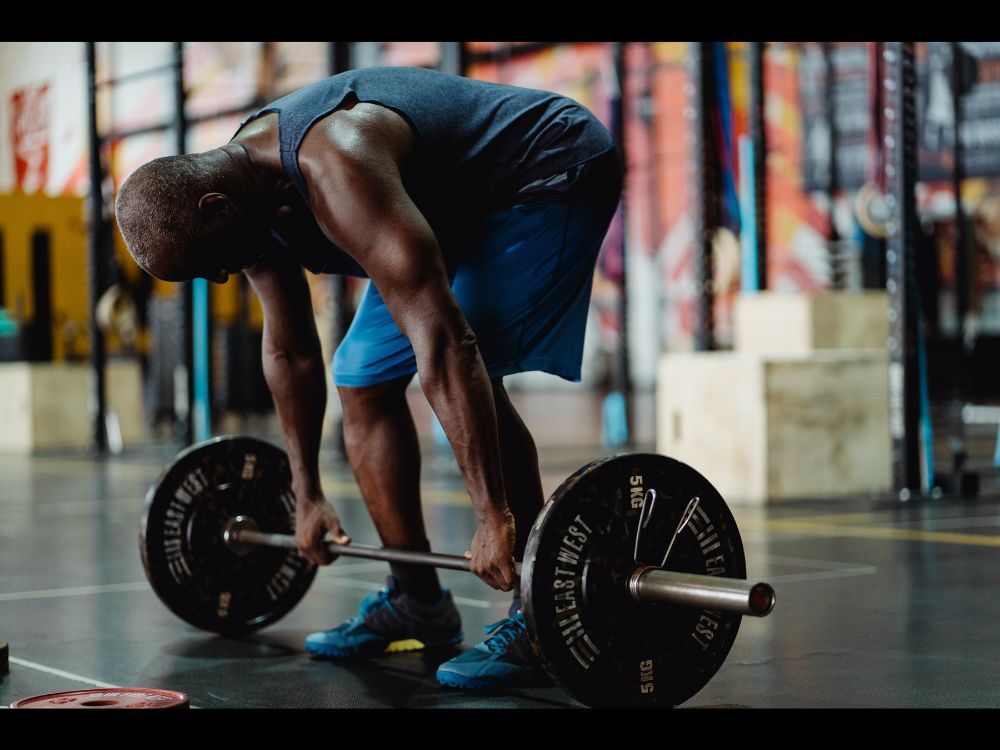
How rows can help build a strong back
Rowing exercises are an essential part of any strength-training routine, as they help build strong and healthy backs. When performed correctly, rows help to strengthen the muscles in your back - including the lats, traps, rhomboids, and rear deltoids. Not only do these exercises increase strength but they also improve posture by helping to pull the shoulders back into alignment, creating a more upright positioning.
Additionally, rowing exercises help with core stability and can be done with weights or machines for further resistance training. By adding rows into your strength-training routine you will be able to reap the physical benefits of a strong and healthy back!
Proper rowing form
Dumbbell rowing is an effective strength-training exercise that focuses on your back muscles. To perform this exercise correctly, stand with your feet slightly wider than shoulder-width apart and hold a dumbbell in each hand. Keeping your core tight and chest up, pull the dumbbells towards you while simultaneously extending your legs out front.
Squeeze your shoulder blades together at the top of the move before returning to starting position. Be sure to keep a consistent pressure throughout the movement and make sure your elbows stay close to your body as you row with each arm. Doing so will help maximize muscle activation while avoiding any unnecessary strain or injury.
Variations of rows (bent over rows, T-bar rows, seal rows)
The bent over row is a classic exercise for building back strength and muscle. Start by standing with your feet shoulder-width apart, and hinge forward at the hips until your chest is parallel to the floor. Keep your core tight and back flat throughout the movement as you grip a barbell or pair of dumbbells with an overhand grip.
Once in position, pull the weight up towards your chest while squeezing your shoulder blades together at the top of the move before releasing back down to starting position. This exercise can also be adapted to suit any level of fitness, by adjusting the weight or angle of your body to suit individual ability levels.
The t-bar row is another effective back exercise that works both upper and lower muscles at once. Start by positioning a barbell in a landmine station, then gripping either side so that it’s resting on your shoulders and/or arms. Keeping your core tight, pull the weight up towards you while retracting your shoulder blades together at the top of the move before slowly returning to start position.
The seal row is an isolation exercise designed to target specific muscles in the mid-back region. Start by kneeling on one knee with your body upright and torso parallel to the ground. Using control, pull a dumbbell up into a ‘rowing’ motion towards one side of you while squeezing your shoulder blades together at each peak rep; release back down slowly before repeating on opposite side for desired reps or sets.
By altering both speed and weight according to comfort or intensity needs this exercise can be made suitable for anyone from beginner through advanced level fitness ranges.
Pull-Ups
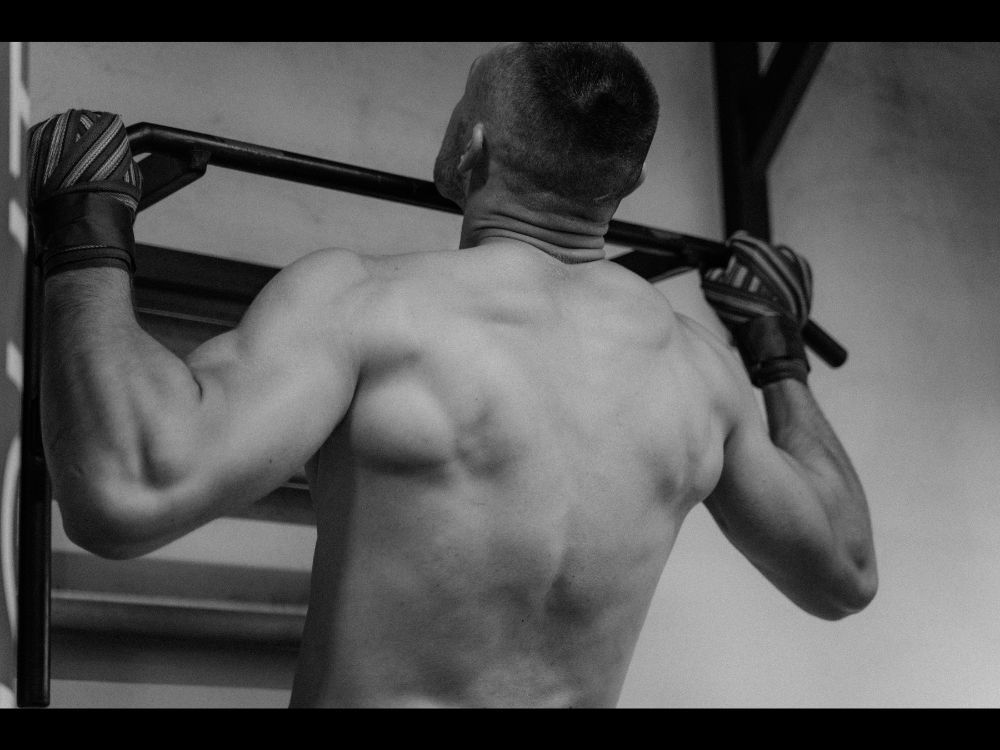
How pull-ups can help build upper body strength
Pull-ups are one of the most effective exercises for building upper body strength. They target the muscles in your back, chest and arms simultaneously and improve functional movement of your shoulder joints. This compound exercise requires you to use all the major muscles in your upper body in order to successfully lift your body off the floor or bar.
Pull-ups should be done with proper form in order to ensure that you are getting the most out of your workout. Start by gripping the pull-up bar with an overhand grip, slightly wider than shoulder-width apart. Then, engage your core and slowly pull yourself up until your chin clears the bar; ensure that you keep a full range of motion throughout reps. Doing pull-ups on a regular basis will gradually build muscular endurance, increasing strength and size of your arms and back muscles over time.
Proper pull-up form
Pull-ups require proper form in order to ensure that you are getting the most out of your workout and avoiding injury. Start by gripping the pull-up bar with an overhand grip, slightly wider than shoulder-width apart. Then, engage your core and slowly pull yourself up until your chin clears the bar; ensure that you keep a full range of motion throughout reps.
To emphasize the back muscles, you can do assisted pull-ups with one or two legs on the floor for support or transition into negatives (or lowering) by jumping to reach the top position and then slowly lower down. Additionally, if you find yourself struggling to complete a set of conventional pull-ups, try using an assist machine to help reduce weight needed to be lifted.
Modifications for pull-ups
Pull-ups can be modified to fit every fitness level and experience level. Beginners can do assisted pull-ups with a partner or by looping an exercise band around the pull-up bar for additional support. More advanced exercisers can add resistance bands, weighted vests, or use slow eccentrics (or lowering) to increase challenge.
Variations like chin-ups (with an underhand grip) and mixed grip pull-ups target slightly different muscle groups. Pull-up modifications can keep challenging your body as you progress in strength and technique. With the right approach, anyone can achieve their pull-up goals!
Romanian Deadlifts
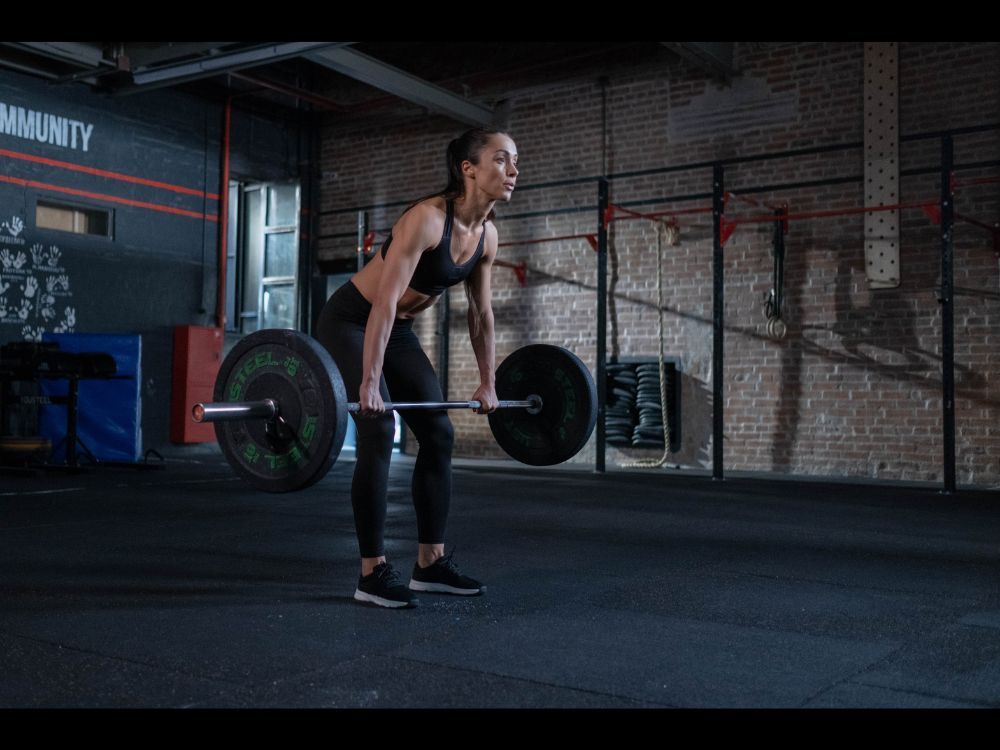
How Romanian deadlifts can help improve posture and core strength
The Romanian Deadlift (RDL) is a great exercise to target the posterior chain muscles, improve posture and core strength. Starting with the barbell in your hand, keep your back straight as you hinge your hips back while letting the bar go down your legs. Your knees should be slightly bent as you reach down and touch the floor or just below knee-level.
Keeping your chest up, use your glutes to stand back up as you squeeze upwards on the bar. Make sure to keep tension throughout the movement and keep a slight bend in your knees during both the eccentric (lowering) and concentric (lifting) phases for maximum effectiveness. By targeting these key muscles, you’ll find that RDLs not only increase mobility but help align posture and build an overall stronger core.
Proper Romanian deadlift form
Proper form for a Romanian Deadlift (RDL) begins with the barbell resting securely in your hands. The bar should be close to your body and your feet should be shoulder-width apart with a slight bend in the knee. Keeping your back straight, hinge at your hips while letting the bar go down your legs. Try to touch the ground or just below knee-level before standing back up.
Make sure to keep tension throughout the movement by squeezing upwards on the bar as you stand. You should be pushing through your heels to engage your glutes and raise yourself up - not rounding your back or using momentum. For an even tougher challenge, add weight or increase tempo for maximum gains!
Variations of Romanian deadlifts (isingle-leg Romanian deadlift, stiff-legged deadlift, good morning)
Romanian deadlifts can be modified to target different muscles and achieve various results. The single-leg Romanian Deadlift (RDL) is a great choice for increasing strength and stability in your legs as well as challenging your balance and coordination.
Start with a barbell on one side of your body while keeping the other foot slightly off the ground. Keeping your back straight, hinge at the hip while letting the bar go down one leg until you reach your knee or just below it. Push through your heel to stand up and make sure to practice both sides evenly. Stiff-legged deadlifts are another variation that help engage more of the back muscles as well as hamstrings.
Stand with a shoulder-width stance and hold the bar in front of you - with this movement you won’t need to bend at the knees as much, but keep a slight bend in them still. Finally, good mornings involve arching your back in an ‘S’ shape towards the ground before standing up again - ensure to engage all posterior chain muscles for maximum gains!
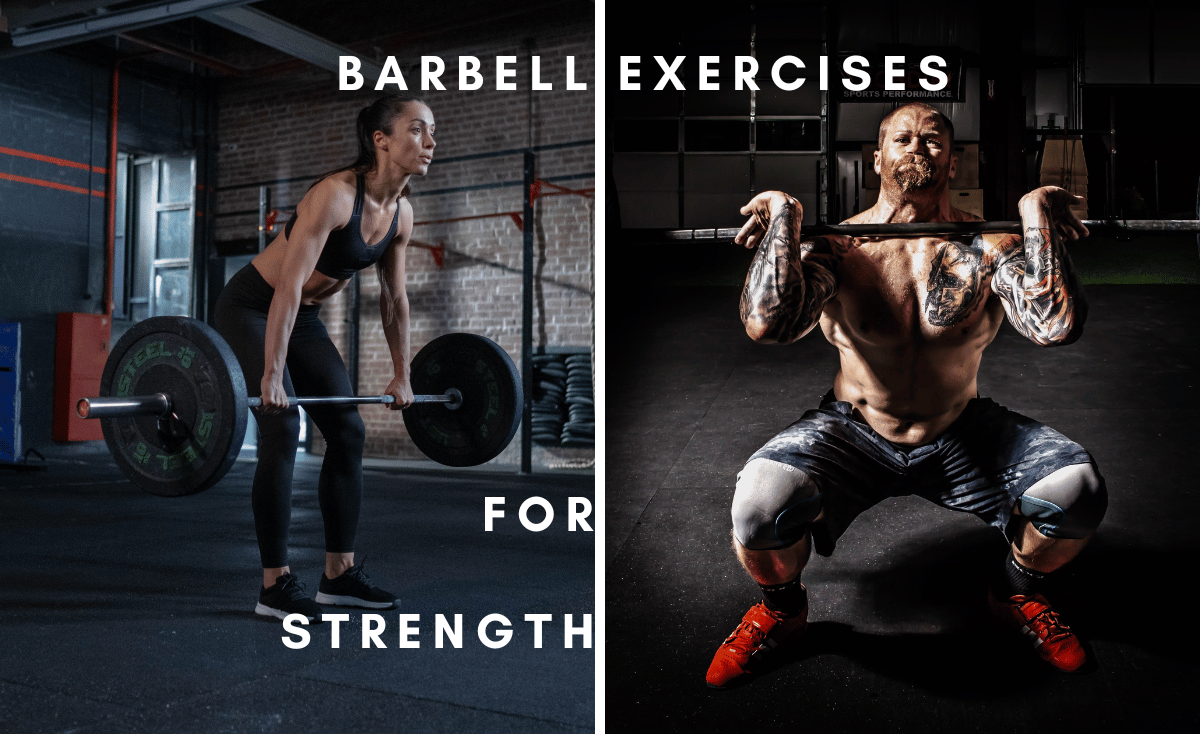
Recap of the 7 essential barbell exercises that can help you get stronger
Congratulations - you now have a great foundation to build your strength! Squats target the glutes, quads and hamstrings while deadlifts train the full body, including arms, back, legs and core. Bench press works mainly on pectoral muscles while overhead press concentrates on the deltoids and triceps.
Rows strengthen the lats and biceps, pull-ups are for the lats and biceps as well as upper back muscles, and Romanian Deadlifts focus on improving hip mobility and strength. Working these 7 essential barbell exercises into your routine will help you become stronger in no time!
How you can incorporate these exercises into your workout routine
Incorporating barbell exercises into your workout routine doesn't have to be complicated. Start by choosing one or two exercises that you want to focus on and begin with lightweights and fewer reps.
To get the most out of your workouts, make sure to incorporate compound movements like squats, deadlifts and press exercises. As you get stronger, increase the weight and reps but don't forget about form! Proper technique is key for injury prevention, so keep an eye on your posture when performing barbell exercises.
Additionally, consider adding accessory exercises such as the barbell hip thrust to target small stabilizing muscles in addition to bigger muscle groups. By staying consistent with a few different movements over time you will become stronger and see amazing results!
Final words of motivation to start your strength training journey.
So, if you're looking for a way to get in shape and build strength, then strength training is the perfect option for you. Don't be intimidated by the process - with enough discipline and consistency, you can achieve your goals.
Push yourself beyond your comfort zone, become more resilient and gain confidence in your own abilities. Remember that it's never too late to start! So take the first step towards becoming stronger today!
